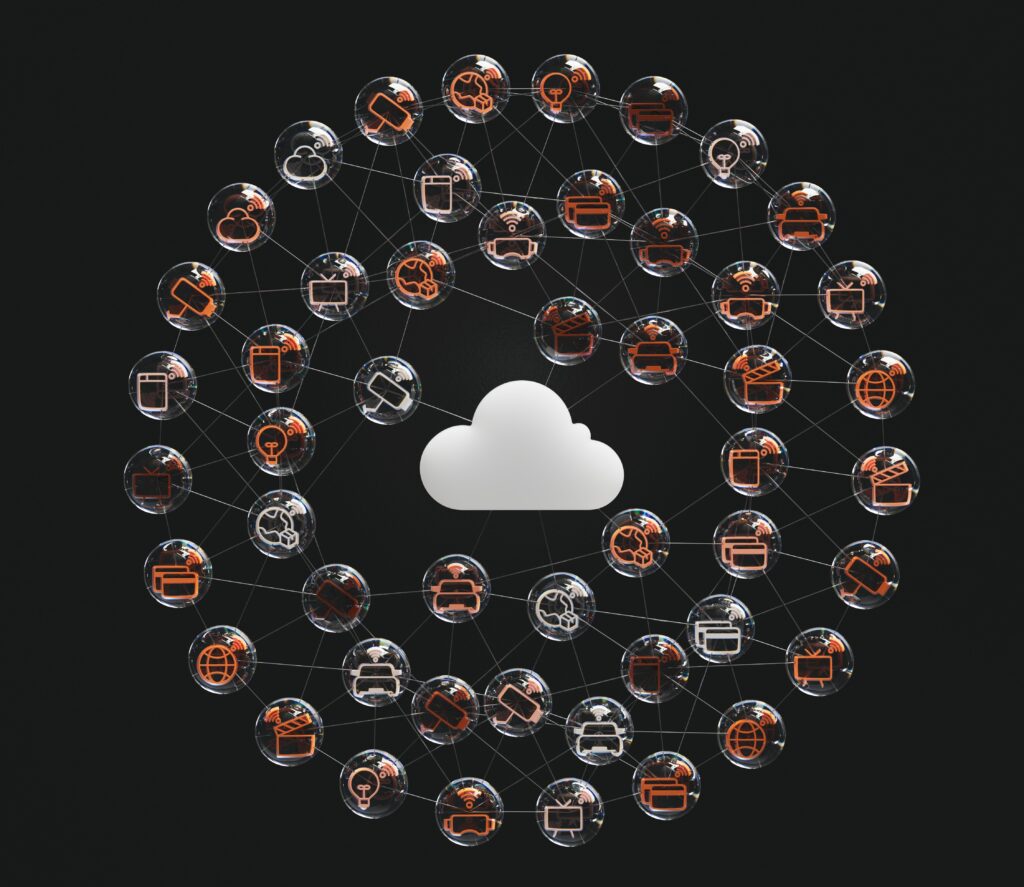Nowadays, many of the devices we own are connected. At home, we have smart lights and air conditioning that automatically turn on when someone is in the room. Our calendars sync across our devices to notify us of upcoming meetings and remind us of errands we have to run. Businesses utilize devices that monitor inventory levels and send alerts when a restock is needed.
With IoT, it is possible to have our daily lives fully automated, making them more efficient. This will not only make life more comfortable, but will in turn reduce costs and emissions.
What is IoT?
The Internet of Things, most commonly referred to as IoT, refers to the collective network of web-enabled objects that connect and exchange information. Here, the “things” refers to the physical objects or devices that are embedded with technologies that enable them able to connect with other devices. IoT integrates these devices with the internet, allowing them to facilitate communication between devices as well as with the cloud.
How does IoT work?
Generally, all IoT solutions have the same main components: a device that uses embedded systems, a gateway or similar edge device, and an IoT application to receive and analyze that information.

First, data is collected by the sensory devices, such as processors, sensors, or antennas. Then, using a gateway, the data moves through a communication network (such as a mobile LTE network) to the data processing domain. Then, the IoT application (such as our pTrack™ portal or a user interface like a smartphone) processes and visualizes it. The devices are able to do most of the work without human intervention, but people can interact with the devices to set them up or access the data.
Where is IoT used?
There are many applications of IoT, ranging from consumer IoT to industrial IoT.
For consumers, IoT increases the comfort of living, automating things that would otherwise take time and effort. Some examples include smart homes with thermostats that automatically adjust to the perfect temperature, smart lights that can be controlled remotely using a smartphone, and smart ovens that automatically detect how long it takes for food to cook.
Smart devices can also have health benefits. For example, a smart watch that tracks the wearer’s daily steps, or monitors the wearer’s vitals to send signals to first responders in case of emergencies. This is especially useful for people with life threatening conditions who live alone, or people who work in dangerous situations like firefighters or construction workers.
IoT also helps create smart cities and buildings by automation. For example, traffic lights that use sensors to alleviate traffic, and building air conditioning systems that turn on by sensing the number of people in a room.
IoT is also useful for businesses. Using IoT, inventory levels can be tracked automatically in real time, making inventory management easier. IoT also collects more data on devices that can then be analyzed to reduce costs or increase efficiency.

What is the future of IoT?
IoT has endless opportunities and potential for integration that will continue to improve how we live our lives and how businesses are run. There are many potential applications for IoT in the future, including environmental monitoring, energy management and in transportation systems, just to name a few.
IoT can be integrated into power grids to transform them into smart grids that are able to monitor power consumption, match generation in real-time, and act proactively in case of blackouts. Smart grids are more efficient, reliable, and environmentally friendly, and prepare us for complex future energy demands. Smart metering solutions, for example, can help monitor utilities to keep track of how resources are being consumed, allocated, and distributed. The precise data from the meter readings can then be securely accessed from anywhere and used for accounting, demand forecasting, and operations.
IoT also has the potential to help in EV adoption. Using IoT, it will be possible to remotely manage and operate EV charging infrastructure that is geographically dispersed, benefitting both drivers and operators. For example, an app can find the nearest charging station for drivers and reserve a slot, and Charge Point Operators can resolve issues remotely by using real time data and analytics received from devices.
Another application of IoT worth mentioning is in the up-and-coming robotics industry. Both robotics and IoT focuses on reducing human involvement, automating tasks so that devices and machines can perform tasks without human intervention. Internet of Robotic Things (IoRT) is a field of research that focuses on creating autonomous networks capable of making smart decisions and collaborating with other robots to carry out complex tasks. Although there are many potential applications of IoRT in healthcare, supply chains, and transportation, IoRT is still a relatively new field of research.
IoT devices help make our environment, homes, vehicles, and workspaces smarter and more efficient. Smart buildings use less energy, and the energy they do use can be optimized to reduce emissions. These buildings in turn also cost less to run, which increases profits. Not only does IoT make everyday lives more comfortable, it also has benefits for the environment and economy, leaving no doubt that the explosion of IoT is almost here.


